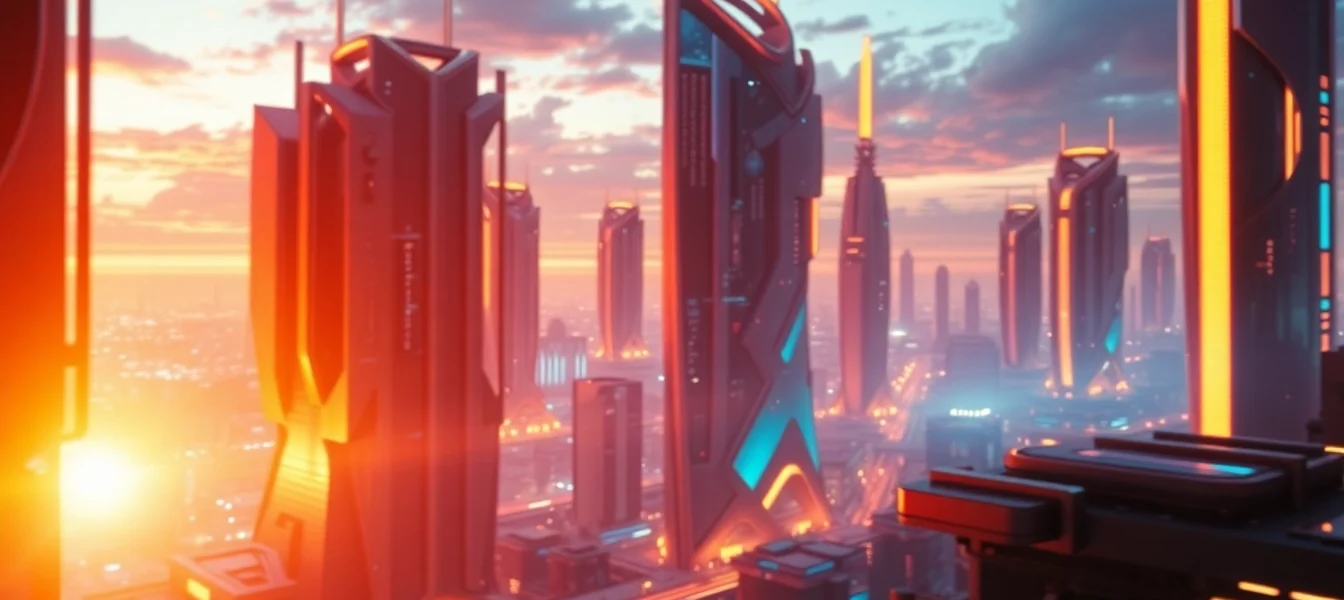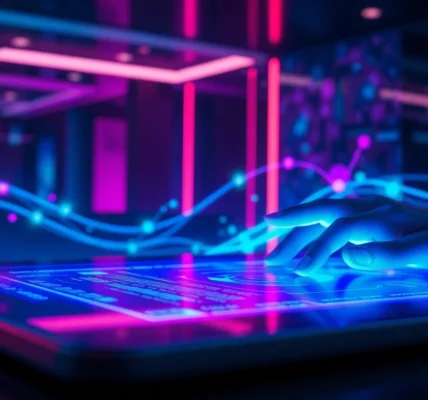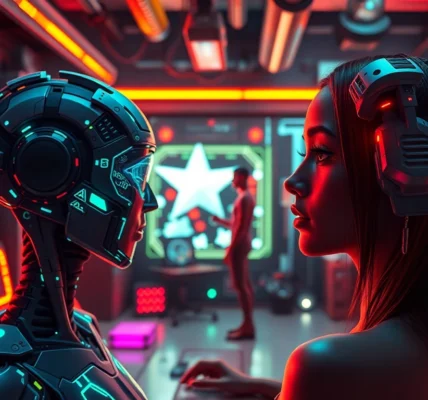Top 5 AI Image Generators No Restrictions for Creative Freedom in 2025
Exploring the Landscape of AI Image Generators Without Restrictions in 2025
Advancements in artificial intelligence have revolutionized digital content creation, offering tools that generate stunning visuals quickly and efficiently. Among these, ai image generator no restrictions platforms stand out for their capacity to produce diverse, high-quality images without the usual content limitations. These unrestricted AI image generators empower creators across industries—ranging from digital art and marketing to adult entertainment and virtual experiences—to push creative boundaries beyond traditional ethical and content constraints. Understanding how these tools operate, their features, and best practices is essential for leveraging their full potential responsibly and effectively in 2025 and beyond.
Understanding AI Image Generators Without Content Restrictions
What Are No Restrictions AI Image Tools?
Unrestricted AI image generators are advanced artificial intelligence platforms designed to produce images directly from text prompts, sketches, or predefined parameters, without enforcing typical content filters or censorship. Unlike standard AI tools that limit the scope of generated content — especially for sensitive or NSFW (Not Safe For Work) material — no restrictions platforms allow users to create explicit, provocative, or sensitive visuals freely. These tools are engineered to provide maximum creative freedom, often incorporating sophisticated algorithms that interpret user inputs with high fidelity to generate realistic or stylized images.
For example, solutions like CGDream AI and Raphael AI enable users to craft detailed NSFW visuals, landscapes, character art, and more, bypassing conventional restrictions while maintaining high throughput and quality. This proliferation responds to demand from creators needing unfiltered expression, including adult content creators, psychological art researchers, and experimental visual storytellers.
Common Features and Capabilities
Unrestricted AI image generators typically boast several key features:
- High-Fidelity Output: Ability to generate hyper-realistic images or stylized art from detailed prompts.
- Batch Processing: Rapid generation of multiple images simultaneously, essential for creative workflows or testing variations.
- Deep Customization: Users can tweak parameters like style, color palette, lighting, and character details for precise control.
- Multimodal Inputs: Support for text prompts, sketches, or images to guide creation, facilitating complex visual compositions.
- Versatile Style Support: Capable of producing diverse styles—anime, photorealistic, cartoon, abstract, and more.
Legal and Ethical Considerations
While these tools unlock vast creative possibilities, they also pose significant ethical and legal questions. The absence of restrictions raises concerns about the potential misuse of AI to generate non-consensual, offensive, or illegal content. Many developers implement user authentication, tracking, or ethical guidelines to mitigate misuse; however, enforcement varies broadly across platforms. Creators should adhere to applicable laws, respect individual rights, and use these tools responsibly, recognizing that unrestrained content generation carries social implications and potential consequences.
Key Features of Leading AI Image Generator No Restrictions Platforms
Advanced Customization and Control
Top unrestricted platforms provide users with granular control over generated visuals. Through adjustable parameters—such as style, detail level, color schemes, and anatomical features—creators can mold outputs to meet their artistic or practical needs. For instance, CGDream’s interface allows for detailed prompt engineering, enabling nuanced face or body features for adult-oriented art. This customized control ensures that creators are not merely passive consumers but active architects of their visual narratives.
Speed and Batch Processing
Efficiency is paramount in content creation, particularly when generating large volumes of images. Leading platforms excel in quick turnaround times, often producing dozens or hundreds of images in seconds or minutes. Batch processing pipelines enable creators to experiment with variations rapidly, improving workflow productivity and enabling instant iteration—crucial for commercial projects, AI training, or iterative design processes.
Types of Visual Styles Supported
Flexibility in style is a hallmark feature. Popular platforms cater to a broad spectrum, including photorealism, stylized anime, cartoon, abstract, and even specific cultural aesthetics. This versatility allows users to craft visuals suitable for commercial branding, storytelling, or personal entertainment, regardless of genre or tone. For example, platforms like Dezgo simplify switching between styles seamlessly, granting creators extensive artistic freedom.
Comparative Analysis of the Top 5 Generators
Ease of Use and Accessibility
When evaluating these platforms, user interface simplicity and accessibility are crucial. Raphael AI, for instance, emphasizes a straightforward interface with minimal setup, making it accessible for beginners. Conversely, platforms like Sugarlab and Dream Companion offer advanced controls optimized for professional creators but may require more technical familiarity. Accessibility also extends to cost; many tools offer free tiers or open-access models, making high-quality, no-restriction content creation more inclusive.
Quality and Realism of Outputs
Image fidelity varies but, in 2025, top platforms can produce photorealistic images indistinguishable from real photographs, especially when fine-tuned. Sugarlab’s high-fidelity visuals and Dream Companion’s hyper-realistic avatars exemplify this trend. Realism is vital in commercial applications, virtual influencers, or adult entertainment, where authenticity enhances user engagement and perception.
Inclusivity of Content Types
Leading generators support a broad spectrum of content types, from soft romantic imagery to explicit NSFW visuals, and even video. Platforms like Aeonfriend and Dezgo include video support, enabling the creation of motion-rich content suited for dynamic storytelling or adult platforms. Inclusivity here extends to cultural representation, diverse anatomy, and aesthetic options, satisfying a wide array of creator needs.
Best Practices for Using Unrestricted AI Image Generators
Creating Ethical and Responsible Content
Despite the allure of unlimited creation, ethical responsibility remains vital. Creators should prioritize consent, avoid generating non-consensual imagery, and respect individual rights. Establishing personal or community guidelines, such as refraining from creating harmful or illegal content, is essential. Many platforms advocate for responsible use, emphasizing that generation should align with societal standards and legal frameworks.
Optimizing Prompts for Better Results
Creating compelling images requires precise prompt engineering. Using detailed descriptors—such as specific facial features, lighting conditions, or emotional tones—can significantly improve output quality. Experimentation and iterative refinement are key; understanding how the AI interprets ambiguous prompts empowers creators to achieve desired results effectively.
Maintaining Security and Privacy
Data privacy and security are paramount, especially when dealing with sensitive or NSFW content. Choose platforms with transparent data policies, minimal data retention, and secure infrastructures. Avoid sharing personal or identifiable information, and leverage private, encrypted environments for sensitive projects.
Future Trends and Opportunities in No Restrictions AI Image Generation
Emerging Technologies and Integrations
The future will see deeper integration of AI image generation with augmented reality (AR), virtual reality (VR), and real-time content platforms. Real-time rendering and AI-driven animation are progressing, enabling live visual storytelling or adult entertainment experiences. Additionally, multimodal AI systems that combine text, image, and audio inputs will create more immersive and interactive content environments.
Legal Frameworks and Policy Developments
As unrestricted AI tools become mainstream, policymakers will need to establish clearer regulations to balance creative freedom with societal safety. Standardized licensing, content moderation, and accountability mechanisms are likely to be adopted. Industry-led ethical frameworks will also guide responsible innovation, ensuring that advances serve society broadly and mitigate misuse.
Expanding Creative and Commercial Applications
Commercial sectors will increasingly leverage these tools for marketing, entertainment, and adult industries—creating virtual influencers, personalized avatars, or immersive experiences. The gaming industry, in particular, stands to benefit from rapid content generation, customizable characters, and dynamic scenes. Educational and therapeutic applications may also explore safe, tailored visual simulations for training or mental health support.




